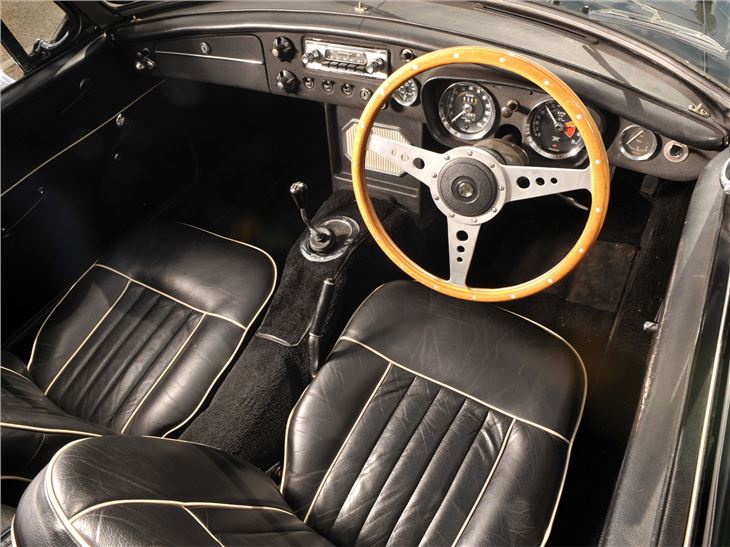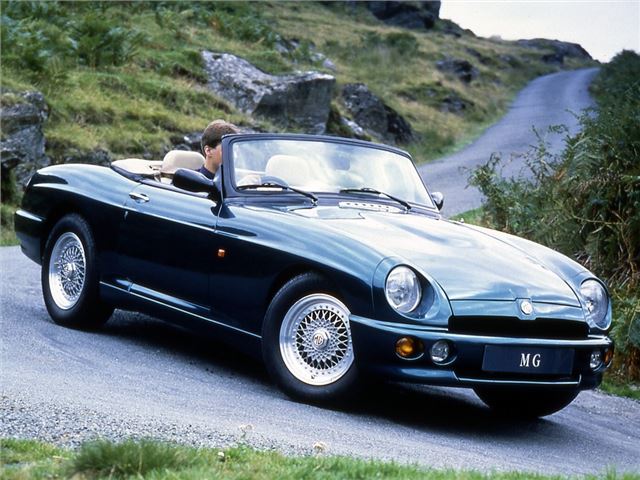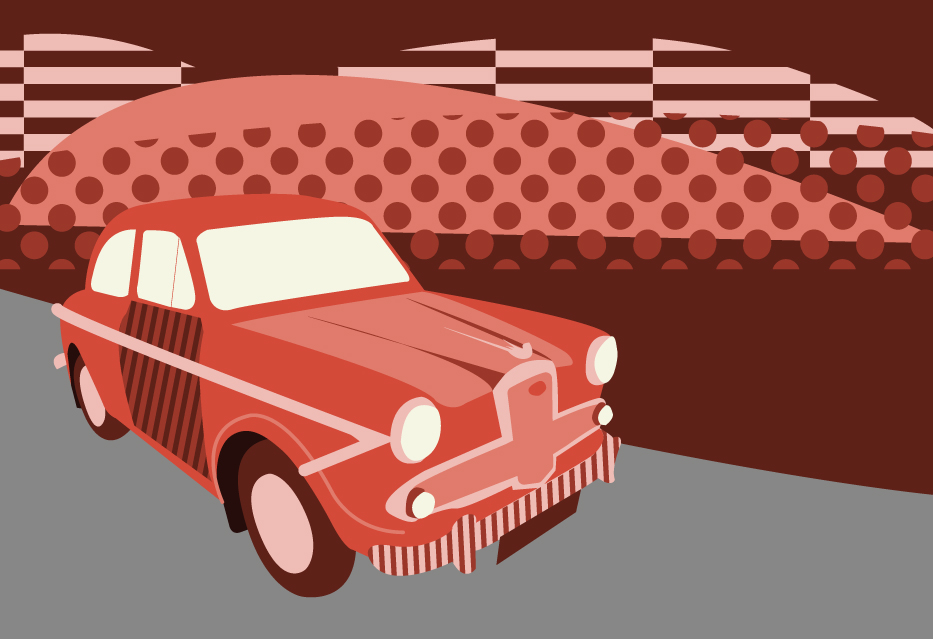It’s as quintessentially English as fish and chips, talking about the weather and a stiff upper lip.
No matter that the MGB was, in some ways, already outdated when it was launched in 1962, and positively antiquated by its demise in 1980, its title as Britain’s best-selling sports car will never be challenged.
Its good looks, honest charm, mechanical simplicity and affordability made it a huge success in its heyday and an ever-popular classic today.
We trace the legendary sports car’s long history.
The 18-year longevity of the MGB tells you everything you need to know about the public’s affection for this most durable of sports cars.
While many experts in the motoring press were shouting “obsolete” by the early 1970s, motorists on both sides of the Atlantic kept on buying them.
Until the Mazda MX-5 (or Miata) came along to knock it off its perch, the B was comfortably the best-selling sports car in the world, with more than half a million rolling off the Abingdon production line.
Even after the car’s roadholding was ruined by an increase in ride height, and its looks arguably spoiled by the addition of rubber bumpers, both to satisfy increasingly strict US safety regulations, it continued to sell well – indeed, the roadster’s highest ever production was not until 1977.
And while contemporary road testers were describing the B as agricultural, outclassed and lacking driver appeal, they nonetheless put their finger on just why the car remained so popular to buyers.
As long ago as 1972, Motor said “the car remains an old friend”, while in 1975, CAR said “there is still a certain charm about the car”.
And that, in a nutshell, is why the car that started life as a breath of fresh air in 1962 was still flying out of showrooms when it had long passed its sell-by date – it had a certain charisma that made motorists overlook its obvious technical shortcomings.
No doubt upset that its expertise had been ignored by buyers for years, CAR finally snapped in 1980 when putting the venerable B up against a TR7, in whose company “it seems merely a silly, irrelevant old car”.
By then, of course, the end was indeed nigh, but the fact that nearly 40,000 survive in the UK alone today is testament not only to the car’s enduring popularity, but to its rugged reliability, timeless design and fun factor.
Like the Mini, Beetle and 2CV, the MGB had proved that character goes a long way, even when more modern and technologically superior cars are available.
Development
By the late 1950s, the beautiful MGA – itself a big success at home and abroad – was suffering from a drop in sales in the face of competition from rivals like the Sunbeam Alpine and Triumph TR4A, as well as the smaller Austin-Healey Sprite.
The newer cars were more civil than the A, with a smoother ride and novelties like wind-up windows and actual door handles, and it was clear a replacement was needed.
The MGA offered superb handling and roadholding, and brisk performance from the B-series engine, gradually increased from an initial 1489cc to 1622cc during the course of its production.
The key for any new car was to marry these sporting characteristics with the more refined comfort and accommodation of its rivals.
MG’s chief engineer Syd Enever set to work alongside designer Don Hayter in 1958 on project EX205, employing an immensely strong monocoque construction, which allowed for greater passenger accommodation.
Under the new skin, much was retained from the MGA, including the B-series pushrod engine, now given an upgrade to 1798cc, providing the extra power, and torque, to offset the extra weight of the new structure.
The front suspension and rack and pinion steering were carried over, the gearbox was almost identical, with no synchromesh on first to begin with, while a traditional live rear axle with leaf springs was employed. Overall, the B’s ride was appreciably softer than its bone-shaking predecessor.
Security, entirely absent on the A, was added, with door handles and locks, a boot lock and a lockable glove box, while inside the dashboard was redesigned with space for a central speaker for the optional radio.
Heating, of a sort, was an optional extra at £16 8s 5d, while you could get wire wheels for £34 3s 7d above the basic price of £690 plus £260 car tax, cheaper than both the TR4 and Alpine.
Launch and early impressions
After four years of development, the MGB roadster was finally ready for launch at the Earls Court Motor Show in September 1962, where it was met with wide acclaim.
Autocar hailed the car, originally called, rather clumsily, the MG MGB 1800, as a significant step forward compared to its predecessor in every respect.
“However hard the traditionalist may cling to a superseded model, there is no doubt that the new MG MGB 1800 is a much superior car to its predecessor, the MGA, in all its forms,” it wrote.
“One cannot think of any aspect of this new sports car which does not show appreciable advantage in comparison with the previous model. In terms of performance, the gains are particularly marked.”
The larger capacity B-series engine now produced 95bhp at 5400rpm, with peak torque of 110lb ft, and overdrive was an optional extra on third and fourth gears from the outset, effectively providing a useful cruising gear.
The sprint to 60mph was cut from 13.7 seconds for the final iteration of the MGA to about 12 seconds for the B, and Autocar said speeds of 90mph could be sustained “without evidence of stress”.
It said the car was “sturdy and rigid”, with fine handling carried over from the earlier car.
“For owners of the MGA, one of the greatest joys of the model has always been the tidy, surefooted and easily controllable handling characteristics; and the new MGB is even better,” said the magazine.
“At speed on twisting country roads the MG is most satisfying to handle.”
Those early tests quickly marked out the B as more of a grand tourer than an out-and-out sports car – lightning quick performance was never the car’s raison d’etre.
Motor described it as a “delightful modern sports car with a marked bias towards the ‘grand touring’ character – a pleasure to drive”.
Arrival of the GT
For the first three years of its life, the MGB had only been available as a roadster, but in October 1965 the pretty GT coupe caused a real stir at the Earls Court show.
Pininfarina did a stunning job of adding a roof to the soft top B, making an already good-looking car into a thing of beauty from every angle.
A hatchback-style rear, combined with a 2+2 seating arrangement, gave the car a certain level of practicality, increasing luggage space significantly over the two-seat roadster.
In truth, only very small children would be comfortable in the back, but it gave the MG a new lease of life and boosted sales to those who wanted a sports car but didn’t fancy wind-in-the-hair motoring.
Slightly slower off the mark than the open top car because of the extra weight, the improved aerodynamics pushed the top speed up to 105mph.
Autocar was immediately sold on the concept, saying: “One of the ‘hits’ of last year’s London Show, the new MGB GT coupe makes friends right away through its good looks and the exceptional practicality of its body.
“Perhaps there is more to its looks than simple beauty of form, for the car has an air of robust build and fitness for the purpose which is borne out completely on the road.
“The quality of the interior furnishing and the care with which all the detail work has been planned put this GT well into the upper middle class, so to speak.”
Like our illustration of the MGB at the beginning of the article?
Download a free high-quality poster version here.
While the GT was, if anything, a little slower off the mark than many touring saloons with similar-sized engines, “none of these could better the MG for sheer tractability at very low engine speeds, nor for the cleanness of its pick-up even from 500rpm in top gear”.
“Indeed, it is a most docile beast, utterly free from any temperament; in this respect – and others – it should be very suitable for the woman driver who appreciates a chic line but is not prepared to suffer for it in other ways. However, she would discover that the brakes call for a somewhat hefty push on the pedal.”
Well, this was 1966, when men believed driving a car was a little too complex for women to get their pretty little heads around…
“This smart newcomer from Abingdon should go far – and fast,” was the conclusion. On that, they weren’t wrong.
The following year, CAR pitched the GT against the Triumph GT6, another conversion from roadster to coupe, this time from the Spitfire, which was more a competitor to the Midget and Sprite than the MGB.
But when Triumph squeezed the six cylinder, 2-litre engine from the 2000 saloon under the bonnet, it suddenly had the urge to beat the B on outright pace, if not all-round quality.
CAR was as impressed with the B GT’s looks in 1967 as Autocar had been the following year.
“There is no doubt that Messrs Pininfarina scooped the pool then they produced the (MGB) GT,” the magazine said. “The subtlety of his roof-plus-fastback approach – good aerodynamically as well as stylistically – contrasts with the less imaginative plain curve of Michelotti’s GT6 roofline.”
The cars produced similar amounts of power, but the lighter GT6 could easily outsprint the MG to 60mph, reaching the landmark in 10.7 seconds compared to 13.2.
But the magazine described the Triumph’s acceleration as “decidedly undramatic in terms of either noise or kicks in the back, a civilised exhaust means it doesn’t sound like a sports car”.
“The MG is slightly more traditional, but soundproofing and smoothness make it a quiet car,” it added.
The MG outscored the GT6 on handling, while both cars were criticised for their lack of creature comforts, including, shock horror, no cigar lighter, “nor even an ashtray in the case of the MG”.
“Of the two cars we would plump for the MG,” was CAR’s conclusion. “Its looks, its extra shoulder room, its relative quietness and its better handling add up for us something that is worth more than the odd few seconds to a given speed.”
When the same magazine reviewed the same two cars four years later, the grumblings about the now nine-year-old MGB were just beginning.
As well as declaring that the “whole concept of the open sports car is pretty much dead” – no-one tell Mazda – the road tester described the MG as “long in the tooth” from a driving perspective, with “stodgy” handling and a fascia and seating position “reminiscent of the late 1950s”. They certainly weren’t saying that when the car was launched – in 1962.
“Worthy as countless owners consider it, the MG seems an uninspiring car today,” the test concluded.
The MGC
The first attempt to produce a higher-powered MGB emerged in 1967, badged as the MGC and wearing a distinctive bonnet bulge to accommodate the repositioned radiator and a teardrop for carburettor clearance.
As well as giving the B more power, the C was intended to fill the gap left by the discontinued Austin-Healey 3000, but the engine chosen – the BMC C-series found in the Austin 3-litre – proved poorly-suited to a sports car.
As well as its leisurely power delivery, the six-cylinder unit was a heavy old lump, upsetting the handling of the car and resulting in less than complimentary road tests.
Testing a C GT in 1968, CAR magazine said the MG lacked any of the crisp response or punch required for a 3-litre sports car.
“The MG unit seems disinclined to pull as hard as one would expect for an engine of its capacity, and could only be described as sluggish at the bottom end,” it added. “Nor does it rev freely at all.”
Massive understeer destroyed the handling, “almost as bad as in its cousin the Austin Westminster”, and the steering was described as “heavy, clumsy and unresponsive”.
Like our illustration of the MGB at the beginning of the article?
Download a free high-quality poster version here.
Concluding, CAR had a question for Abingdon, home of the British sporting tradition: “Did you have to do it like this?”
“For the first time in our lives we have driven a supposed sports car totally devoid of sporting characteristics, save only that it still seats only two.”
Given this reaction, unsurprisingly the C was cancelled after less than two years, with just over 9,000 sold.
Gradual evolution but no revolution
Despite most assertions that the MGB didn’t change over its lifespan, it was constantly tinkered with, and enough changes were made to designate a mark II model for 1968.
This included synchromesh on all four gears and revised ratios, a new rear axle, and an alternator in place of a dynamo, on top of previous changes to swap to a five-bearing crank from three at the bottom end.
The following year saw cosmetic changes that altered the car’s appearance for the first time, upsetting the purists by replacing the original slatted chrome grille with a recessed plastic unit.
A more traditional-looking chrome polished grille returned in 1973, with a black honeycomb-style insert.
While the basic mechanics of the MGB remained little changed, other manufacturers were coming up with new, exciting sports cars, none less than Nissan, who unleashed the 240Z on to the market in 1969.
It quickly became the best-selling sports cars in America, MG’s most important market, with performance that obliterated the relatively sedate British car.
There was much talk of a replacement for the B, but two promising projects never got off the ground.
A pretty, Pininfarina-designed car, codenamed Project EX234, featuring hydrolastic suspension, was ditched as internal politics began to bite at the British Motor Corporation – which also owned Triumph – and the company concentrated on higher volume models.
The second, ADO21, only ever made it to the clay mock-up stage, with the company, now under the ownership of the bungling British Leyland (BL), directed their efforts into a new, corporate sports car that would become the Harris Mann-designed Triumph TR7.
The chance to bring the MGB up to date had been lost, not once, but twice.
Development of the B would continue to be hampered by BL’s bizarre decision, under chief Donald Stokes, to place MG outside a new Specialist Car Division in favour of Triumph.
MG, which produced only sports cars at the time, was clearly not “specialist” enough in Stokes’ eyes.
The view from America
Despite this, the MGB continued to sell well, especially in the USA, where Motor Trend did its best to explain its allure in spite of the car’s obvious shortcomings.
“The comments one hears about MGs in many ways recall those made by US Navy people concerning British wartime ships: often uncomfortable, wet, bluff and straightforward almost to the point of crudity – but they get the job done,” it said in October, 1971.
“So it is with the MG; blunt, strong and, by today’s standards of sophistication, almost crude, they accomplish their purpose in a manner both surprising and admirable.”
With an engine and running gear dating back to the early ‘50s, the magazine said: “At first glance, and even at a second, this would seem to shout obsolescence in words of brass. A better description would be ‘well proven’ though that is often used as a euphemism for ‘obsolete’.
“Probably ‘matured’ describes things more accurately.
“In spite of the fact that by today’s standards this (the car’s 95bhp) is lawnmower and garden tractor power, an MGB will do what MGs have been doing for nearly half a century when in its own country, which is to suck the headlights out of more prosaic machinery including a number of our own more respectable domestic passenger cars.”
A more powerful MGB
With MG, now an offshoot of Austin-Morris, being blatantly ignored by BL bosses, it had long been left to independent tuning firms to fill the void for a more powerful MGB.
Where the MGC spectacularly failed, tuners like Ken Costello were doing what BL should have done all along – putting the Rover V8 under the bonnet of the B GT.
After driving a Costello car in May, 1972, Autocar drew an obvious conclusion: “We can think of no reason why BLMC are not producing it themselves, and their product planners ought to be ashamed at not having spotted this potential market.”
The car was distinguished by a bonnet bulge and a special “egg box” grille, and featured an uprated gearbox and clutch, and raised final drive ratio married to standard suspension, steering and brakes.
Costello managed to lighten the car by 90lb, and adjust the weight distribution from the B’s slightly front-heavy 52.6:47.4 to exactly 50:50, improving the balance of the car.
Performance was unlike anything seen before in an MG, and a world away from the sluggish MGC, with the 150bhp V8 scorching off the line to reach 60mph in just 7.8 seconds, aided by 200lb ft of torque.
“As a conversion, we rate this car as perfect and as a model in its own right it deserves the highest praise,” concluded Autocar.
MGB GT V8
Even though MG and Rover had been part of the same company since 1968, it took five years for BL to get round to putting the V8 into a production MGB, offered only in GT form.
It produced 137bhp, less than the Costello car but still enough for a healthy 0-60mph time below eight seconds, and easily enough to see off the Datsun 240Z and keep pace with a Lotus Elan +2 and a Capri RS3100.
Strangely, the car was never sold in America despite being tailor made for it.
Testing a V8 in January, 1974, CAR magazine criticised the MG’s heavy understeer and lack of driver appeal, but there was still plenty to recommend it.
“Its main attributes are its very good performance and big, lazy and mooth engine, its strong construction and good finish, its taken-for-granted reliability and the MG name itself,” it said.
“No mean set of virtues really; but the driver appeal simply isn’t there to back it all up.”
Unfortunately, the V8 arrived at the height of the oil crisis, when motorists were buying small-engined, economical cars – the opposite of the gas-guzzling V8.
Demand for such a car simply wasn’t there, and only 2,591 were built over two years, of which an impressive 968 remain in one state or other in the UK.
If the company had opted for the Rover V8 over the Austin 3-litre installed in the MGC, and called it an MGB V8, things may have worked out rather better.
Rubber bumper cars
The most dramatic and, for many, cataclysmic change to the MGB came in 1975, when American safety laws dictated that the car’s pretty chrome bumpers and grille were replaced by thick, black rubber designed to absorb impact up to 5mph.
Moreover, the ride height was raised to comply with impact regulations, markedly affecting the handling, one of the car’s greatest assets, and producing excessive body roll on hard cornering.
The MG’s character had been changed forever, although the handling was later rectified with the fitting of thicker rear anti-roll bars.
With no such laws in place in the UK, there was surely a case for leaving the car unaltered for the home market but, much to the displeasure of the British motoring press, it was not to be.
Autocar summed up the feelings of many in April, 1975: “It is a fact to be proud of that 80% of all MGBs made are exported to America.
“One sympathizes with any car manufacturer, British, European or American who tries to keep up with the caprices of Federal interference in design, but we do not see why the British and European MGB customer should have to put up with somewhat spoiled handling for the sake of transatlantic needs and production ease here.”
After 13 years in production, the magazine said it was “obvious that the MGB more than ever needs some redesign” as it falls “far behind some of its international competitors”.
“A new B is needed now, more than ever before, an open car of modern design, especially in suspension and performance,” added the magazine.
“At the same time, one does not envy the body designer who has to follow such a pleasant-looking sports car, which is still, in spite of its failings, many of the things that a sports car should be.”
CAR magazine’s test of the same year against the Toyota Celica GT and Lancia Beta Coupe showed just how outmoded the MG now was, but again highlighted why it still sold so well.
“The MG’s engineering is so conventional as to be painful for a sporting car in this day and age,” it said. “The MG feels like an agricultural implement after the two twin cams. It has plenty of torque and exceptional flexibility, yes; but you feel like taking time out to hum a tune as you wait for the tachometer needle to go around the dial.”
Like our illustration of the MGB at the beginning of the article?
Download a free high-quality poster version here.
However, it acknowledged that “reputation and charisma are powerful factors, and judging by the way it continues to sell strongly as it plunges deep into its second decade, the MGB has plenty of both”.
“There is no doubt that it has grown very old, nor is there any doubt that it bears the scars of battling to meet the legal requirements of the American market upon which its maker’s bookkeepers depend so strongly,” it added.
But even with the bumpers the MGB GT remains “an attractive enough coupe with plenty of snappiness and individuality about its appearance”.
“Strangely enough, through the noise and crudity of it all, there is still a certain charm about the car. It is what it is: rugged and ever-reliable, but so very old-fashioned.”
Decline and fall of the MGB
The trusty old car soldiered on for a further five years, still selling well, but with a complete lack of investment and development it was clear it couldn’t go on forever in its current form.
BL’s chairman and managing director Michael Edwardes claimed that unfavourable exchange rates and a currency crisis in the late 1970s meant that each MG sold to America was losing £900.
The company believed it would be too expensive to create a brand new car, especially as it had poured money into the TR7, which was wrongly thought to be suffering poor sales because of the mere presence in the marketplace of the MG.
CAR actually tested the two cars alongside each other in March 1980, just months before Edwardes made the controversial and unpopular decision to close the Abingdon factory.
The magazine didn’t shy away from the sad truth that, in purely technical terms, the stoic B “does not deserve still to be in the ranks of the new cars”.
“The Triumph is so clearly superior that you’d have to be crazy to buy an MG if your desire is a fast, good handling comfortable sports coupe,” it said.
“In the company of the TR7 it seems merely a silly, irrelevant old car.”
Be that as it may, people didn’t buy the MG for its power, its up-to-the-minute handling, or its creature comforts; they bought it because they loved its simple charms, its classic good looks and the trusted MG name.
“The harsh probability is that within a year the car will be dead – martyred, many will say,” said CAR, presciently.
The manner of BL’s announcement that the Abingdon factory would be closed, with no new MG cars made, left a sour taste for workers and supporters of the marque.
Having just spent a week celebrating 50 years of MG Cars, culminating in a street carnival on Sunday, September 9, Edwardes announced the very next day that the factory would close by June 1980.
It became known as “Black Monday” among MG fans, and a band of influential enthusiasts led by Alan Curtis, chairman of Aston Martin, set out to try to save the factory, and buy the MG brand and the MGB.
They had £30m at their disposal and planned to continue production of an updated B, even getting as far as creating a William Towns prototype in June 1980.
But after protracted negotiations, the deal fell through and the Abingdon plant closed for good in October 1980.
The final opportunity to rescue, and develop, the MGB had been lost.
The resurrection
The MG badge lived on, but the sight of it adorning hot versions of hatchbacks like the Maestro and Metro, as well as the stodgy Montego saloon, was an affront to traditionalists.
In the background, however, the British Motor Industry Heritage Trust (BMIHT) was doing everything it could to keep existing MGBs on the road, and their efforts led directly to an audacious manoeuvre by Rover to bring the B back to life.
The BMIHT found much of the tooling for the B was still intact, and went into production of full bodyshells for the restoration market.
They proved the basis of the MG RV8, dreamed up by Steve Schlemmer, at the time head of a special products department tasked with developing low volume niche products for Rover.
In Schlemmer’s own words, his aim was to build “the ultimate expression of what the MGB would have been had it stayed in production”.
In truth, only five per cent of the new car was directly taken from the B, including the doors and boot lid, a re-engineered leaf sprung live rear axle, and the rear drum brakes.
Under the bonnet, a 3.9-litre Rover V8 similar to that used in the original B V8 and producing 190bhp was married to the gearbox from a Rover SD1.
Other parts were borrowed from a mish-mash of other cars, including Porsche 911 headlamps, dashboard instruments from TVR, interior door handles from a Jaguar XJS, stalks from a Rover 800 and Metro door mirrors.
Inside, veneered burr elm woodwork combined with Connolly leather to provide an opulent cabin a world away from the original B, creating the impression of “an olde worlde aristo’s sportster”, according to CAR.
It all added up to a package that the magazine described as a “particularly well coordinated and handsome” car.
“Some may wonder at the wisdom of reintroducing a car so far past its sell-by date that by the end of its life it was fit for nothing more than reminding us how far cars had come,” it said.
“No manufacturer has reinstated a production car so long after it was killed.”
So was it any good?
With 242lb ft of torque on tap at only 3,200rpm, performance was electric, blowing the old MGB GT V8 – and plenty of contemporary rivals – out of the water, with a 0-60mph time of just 5.9 seconds.
“It’s great fun, if a bit vintage, delivering seamless power pretty much constant whatever the revs,” said CAR. “The RV8 is not about ultimate handling and grip, but grand touring.
“It’s what MGs have been ever since the B began to get old – something for the bloke who fancies a sports car, but isn’t really a knowing enthusiast.”
At £26,000, it was “aimed at affluent people who like the idea of a classic car without it being old”.
A total of 1,983 were produced over three years between 1992 and 1995, with the majority heading for Japan, although many were reimported and 600 survive in the UK today.
It was succeeded by the mid-engined MGF roadster, designed when the Rover Group was owned by British Aerospace but launched in 1995 after its sale to BMW.
The first all-new MG model since the B, the F and its successor, the TF, sold nearly 120,000 models before production ceased when the MG Rover Group collapsed in 2005.
The afterlife
In recent years, there has been a trend to reimagine classics, using donor cars and bringing them kicking and screaming into the modern world.
And like the Singer Porsche and David Brown Mini, the MGB has been brought into the 21st century by Abingdon-based Frontline Developments, whose GT-based LE50 and Abingdon Edition roadster offer supercar performance and upgraded interiors with Wilton carpets, Alcantara headlining and leather seats.
The LE50 produces 238bhp from its 2-litre Mazda engine, propelling the car to 60mph in just 5.1 seconds, but it’s the £96,000 Abingdon Edition that really sets the pulse racing.
Beneath the bulging bonnet lies a 2.5-litre Mazda unit good for 304bhp and 241lb ft of torque.
In a car weighing only 897kg, that’s enough to shove the car to 60mph in a claimed 3.8 seconds and on to 160mph – in what looks like an MGB, built using a heritage bodyshell.
Naturally, the suspension and brakes are seriously upgraded, while power steering, improved heating and air conditioning add the creature comforts expected in a modern sports car.
Testing the car in 2014, Evo magazine described it as “an absolute hoot”, with a sweet gearbox and razor-sharp engine “blessed with a fabulous, hard-edged soundtrack to match”.
Of course, for near enough £100,000, you could buy a Porsche 911 Carrera S Cabriolet, but what you’re paying for is an MGB like no other, handbuilt to exacting modern standards.
The MGB may be long gone, but it will never be forgotten.

























